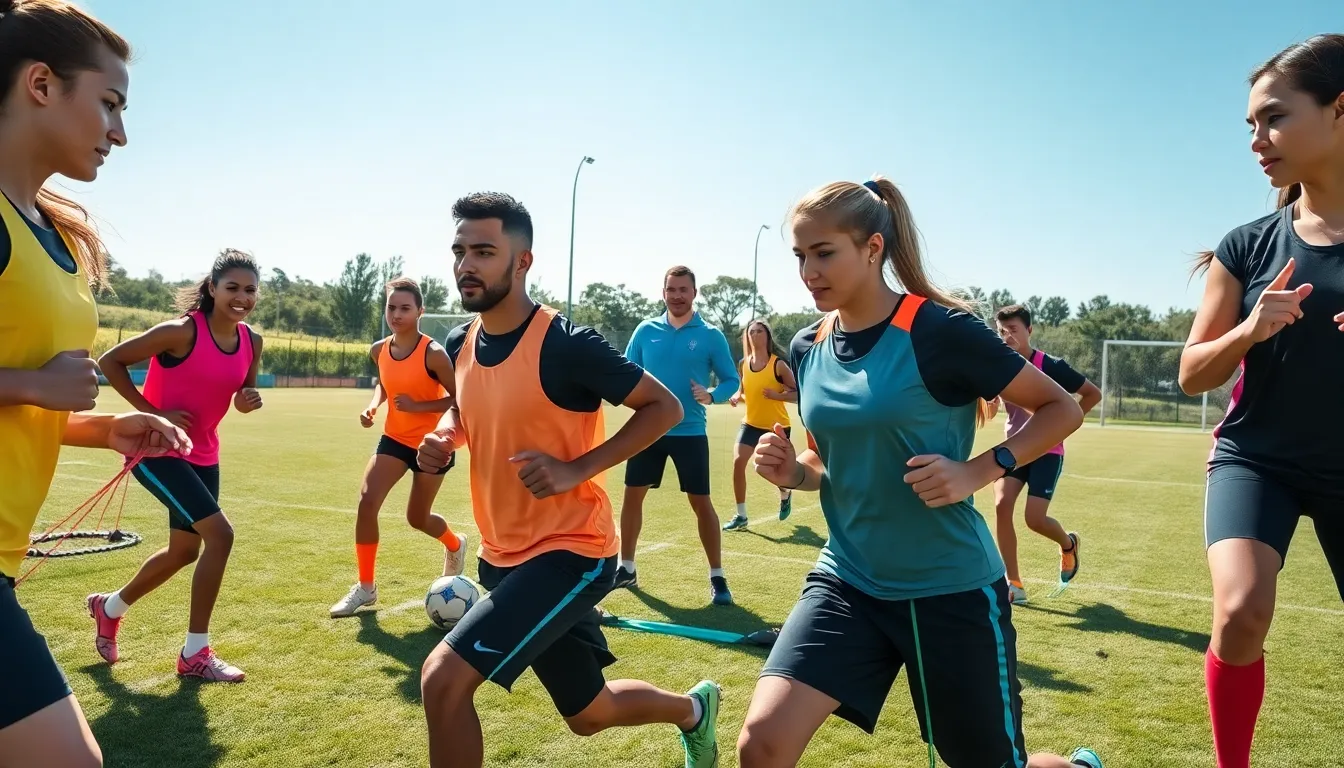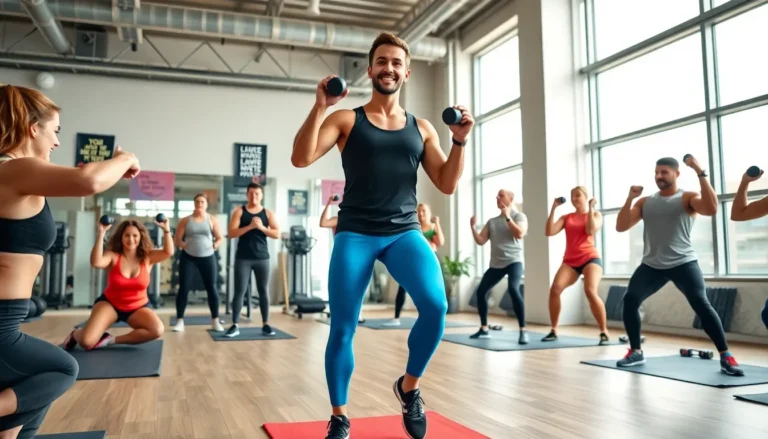Think soccer is all about fancy footwork and bending it like Beckham? Think again. While those skills are essential, the real MVP behind every successful soccer player is fitness training. From explosive speed to rock-solid endurance, getting fit for soccer is just as crucial as learning how to dribble. So, lace up those cleats and let’s jump into the world of soccer fitness training, where strength, speed, and flexibility meet to help athletes dominate the pitch.
Table of Contents
ToggleImportance of Fitness Training for Soccer Players

Fitness training isn’t just a sidekick, it’s the superhero of any soccer player’s journey. First off, having a solid fitness foundation improves performance levels. Players who commit to training see enhanced stamina, allowing them to outlast opponents during those critical last few minutes of a match. Nobody wants to be the one gasping for air when the trophy is within reach.
Also, fitness training reduces injury risks. Soccer involves sudden sprints and rapid changes in direction, which can be tough on the muscles and joints. Regular strength and conditioning exercises help prepare the body for these physical demands, giving it the resilience needed to withstand the rigors of gameplay.
Finally, physical fitness can boost a player’s confidence. Picture this: a player dribbling past defenders, all while feeling unstoppable. That kind of self-assuredness often springs from knowing that they’ve put in the hard yards during training. When fitness meets skill, magic happens on the field.
Key Components of Soccer Fitness Training
Every soccer fitness regime is built on three crucial components: strength training, endurance training, and agility drills. Let’s break these down, shall we?
Strength Training for Soccer Players
Strength training is plain essential for soccer players. This doesn’t mean lifting heavy weights like a bodybuilder but rather focusing on functional strength exercises. Squats, lunges, and deadlifts can work wonders, improving those crucial leg muscles that keep players fast and support powerful kicks.
Incorporating resistance training using bands or body weight can also help build muscle without risking injuries. The goal is to develop a balanced muscle group that works harmoniously during gameplay.
Endurance Training Techniques
Next up is endurance training. Soccer matches can stretch out over 90 minutes or longer, so players need stamina to maintain a high level of performance. High-Intensity Interval Training (HIIT) has become a favorite method among coaches because it simultaneously builds aerobic and anaerobic stamina.
Whether it’s sprinting short distances intertwined with rest periods or maintaining a steady tempo for longer runs, finding the right technique is key for endurance. Plus, adding occasional tempo runs can give players the edge when they need to push through fatigue.
Agility and Speed Drills
Finally, let’s not overlook agility and speed. Drills like ladder exercises, cone sprints, and shuttle runs develop a player’s ability to change directions quickly and accelerate effectively. These drills sharpen quick footwork skills that are vital in evading defenders or making last-minute passes.
Truthfully, being quick on one’s feet can be the difference between scoring a goal or being flagged for offside.
Incorporating Flexibility and Recovery
Fitness training isn’t just about going full throttle all the time: recovery and flexibility play equal roles in a well-rounded program. Stretching before and after workouts can help prevent injuries and increase the range of motion.
Incorporating yoga or Pilates into training routines can boost flexibility significantly, allowing for more fluid movements on the field. Strengthening the core is also crucial, as it stabilizes players during physical contact and enhances overall performance.
Also, never underestimate the power of rest days. Adequate recovery allows muscles to rebuild and adapt, making way for improved performance in successive training sessions. Players are advised to listen to their bodies and prioritize recovery techniques, from foam rolling to professional therapy, ensuring they’re always ready to hit the field.
Creating a Personalized Fitness Plan
A one-size-fits-all approach doesn’t cut it in soccer fitness training. Every player is unique, with different skill sets, fitness levels, and goals. Creating a personalized fitness plan is essential for maximizing potential.
Start by assessing current physical conditions and identify specific areas for improvement. Players can consult with fitness professionals or coaches who can tailor programs to fit individual needs.
Setting clear, measurable goals helps maintain motivation over time. Whether it’s improving sprint times, increasing overall strength, or enhancing agility, having defined targets provides a roadmap for success.
Finally, keeping things fun and varied is key. Mixing up workouts with games, training drills, and different exercise formats helps maintain enthusiasm and ensures that players stay engaged in their fitness journey.


